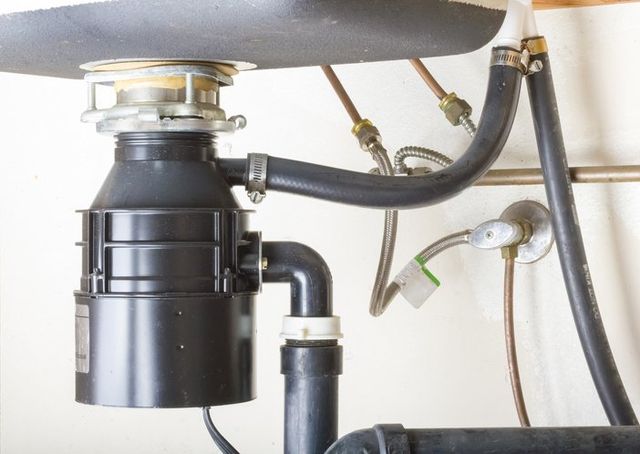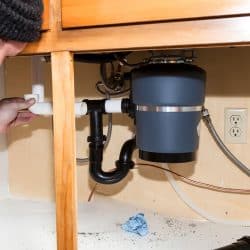Simple Steps to Stop a Leak in Your Garbage Disposal
Simple Steps to Stop a Leak in Your Garbage Disposal
Blog Article
Listed here down the page you can get a bunch of brilliant additional info all about Why Is My Garbage Disposal Leaking From the Bottom?.

Waste disposal unit are crucial kitchen devices that assist in throwing away food waste successfully. Nonetheless, a dripping garbage disposal can be a discouraging and unpleasant problem to deal with. Fortunately, many leaks can be taken care of easily with a few straightforward actions. In this short article, we will review exactly how to deal with a leaking waste disposal unit effectively.
Intro
Waste disposal unit are mounted under kitchen sinks and are created to shred food waste into smaller sized pieces, permitting it to travel through the plumbing system easily. While these gadgets are generally dependable, leakages can occur gradually as a result of wear and tear, loosened links, or damage to the unit.
Step-by-Step Overview to Repairing a Leaking Garbage Disposal
Switch off the Power
Before trying any kind of fixings, ensure that the power to the waste disposal unit unit is switched off to prevent the danger of electrical shock.
Find the Leak
Identify the specific place of the leakage and establish the reason
Tighten up Links
Utilize a wrench to tighten up any type of loose links between the disposal device and the pipes system.
Change Seals or Gaskets
If the leak results from worn seals or gaskets, get rid of the old parts and replace them with brand-new ones.
Patching Fractures or Openings
For splits or openings in the disposal unit, use epoxy or a suitable patching material to seal the damaged location.
Recognizing the Source of the Leakage
Prior to trying to take care of a leaking waste disposal unit, it is important to identify the resource of the leakage. This can usually be done with visual examination or by carrying out easy examinations.
Visual Examination
Examine the garbage disposal device thoroughly for any kind of signs of water leakage. Pay very close attention to locations around seals, gaskets, and link points.
Evaluating for Leakages
One method to evaluate for leakages is by running water with the disposal unit and looking for any visible indicators of leak.
Common Sources Of Leaks in Garbage Disposals
Worn Seals and Gaskets
Seals and gaskets play a vital function in avoiding water from leaking out of the waste disposal unit. In time, these components can deteriorate, resulting in leakages around the disposal device.
Loose Connections
The links in between the garbage disposal and the pipes system can become loosened gradually, causing water to leakage out throughout procedure.
Fractures or Openings in the Disposal Device
Physical damage to the waste disposal unit, such as fractures or holes in the housing, can additionally cause leaks.
Tools and Materials Needed for Taking Care Of a Dripping Garbage Disposal
Prior to starting the repair work process, collect the essential tools and materials, including a screwdriver, flexible wrench, plumbing's putty, replacement seals or gaskets, and epoxy or patching product for fixing cracks or holes.
Testing the Garbage Disposal After Repair Work
As soon as the repair service is total, test the garbage disposal by running water through it to make certain that the leak has been solved.
Preventive Upkeep Tips to Stay Clear Of Future Leakages
To avoid future leakages, it is important to carry out routine maintenance on your garbage disposal. This consists of keeping it tidy, preventing putting non-food products or difficult things down the disposal, and regularly looking for leakages or other concerns.
Verdict
In conclusion, fixing a dripping garbage disposal is a fairly simple process that can be finished with fundamental devices and materials. By complying with the actions detailed in this article and exercising preventative upkeep, you can keep your waste disposal unit in good working condition and avoid expensive repair work in the future.
HERE’S HOW TO FIX YOUR GARBAGE DISPOSAL
WHAT TO DO IF SOMETHING IS STUCK IN YOUR GARBAGE DISPOSAL
If the impeller won’t turn, there’s probably something stuck in the disposal. It could be a steak bone or peach pit, although plumbers report pulling all sorts of inappropriate objects out of disposals, such as bottle caps or aluminum foil. Make sure power to the disposal is off, and look inside to see if you can see the source of the jam.
Never stick your fingers in a disposal. Pull out anything you see with tongs or pliers.
If the disposal still won’t work, it may be time to call a plumber or consider buying a new disposal. GEM Plumbing & Heating is here for all of your garbage disposal needs.
WHAT TO DO IF YOUR GARBAGE DISPOSAL DRAIN IS CLOGGED
Take everything out from underneath your sink and put a bucket or other container under your disposal to catch any water that drains out. Disconnect your disposal from the power supply. If it’s plugged into a wall outlet, unplug it. If it’s hardwired into an electrical box, go to the electrical panel and turn off the breaker for the disposal. Pour ¼ cup of baking soda into the drain, followed by ½ cup of white vinegar. Give the solution a few minutes to fizz and do its work. Look into the disposal with a flashlight to see if you can see an object that might be causing the clog. If you see it, remove it using tongs or pliers. MORE TIPS ON DEALING WITH A CLOGGED GARBAGE DISPOSAL
Never use drain cleaner in a garbage disposal. It can damage the plastic parts inside the disposal. You can also be splashed with the caustic liquid while working to clear the clog. Beware! Never stick your fingers into a garbage disposal. Trust us — not a good idea. In many instances, your dishwasher drains through your garbage disposal. This allows the disposal to grind any large food particles that may be drained out of your dishwasher. There are some jurisdictions, however, where the plumbing code prohibits such a connection. WHAT TO DO WHEN YOUR DISHWASHER DRAINS THROUGH THE DISPOSAL
Run some water in the sink so your plunger has at least a ½-inch of water to create a seal and plunge vigorously up and down several times. You may need to repeat this several times. Run hot water down the drain to clear any residue that remains.

I'm very drawn to Why Is and I'm hoping you enjoyed reading the entire blog entry. Loved our article? Please share it. Let other people find it. Bless you for your time. Come back soon.
Visit Our Site Report this page